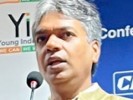The voter turnout, often referred to as the percentage of eligible voters turning up to exercise their franchise, has seen a decline of 4.4 percentage points in the first phase of the Lok Sabha elections, marking the first drop since the last three electoral cycles. This has sparked concern among political parties and candidates alike, as well as the Election Commission of India (ECI).
In the first phase, 93 out of 102 constituencies witnessed a decline in turnout compared to 2019. Of the 40 seats won by the Bharatiya Janata Party (BJP) in that year, as many as 39 saw a drop in turnout, while among the 15 seats won by the Congress, 12 saw a reduced voting percentage.
Both the ECI and the BJP have taken measures to address this decline, with the Prime Minister urging citizens, regardless of party affiliations, to actively participate in what is known as the world's largest democratic exercise.
Various theories have been proposed to explain this trend, but it is important to note that there is no strong correlation between turnout and electoral outcomes. An analysis spanning 16 elections from 1957 to 2019 reveals that turnout increased 10 times, with governments getting re-elected six times. Conversely, there were six instances of turnout decline, with governments being re-elected twice.
One significant factor contributing to the low turnout, amidst awareness campaigns, is the prevalence of heatwaves and high temperatures across the country. India's average temperature has risen by approximately 0.7°C over the long-term average, according to a report from the Press Information Bureau released on August 2, 2023.
A study conducted by the Indian Institute of Technology, Kharagpur, titled Surface Temperature Increase over India during 1980-2020 and Future Projections: Causal Relationships Between Drivers and Trends, predicts a potential surge of 1.1 to 5.1°C in India's surface temperature by 2100. The study highlights a trend of rising temperatures during both pre-monsoon and post-monsoon seasons in several regions of India.
In January 2024, the average temperature reached 13.14°C, the highest ever recorded for that month, surpassing the previous record set in 2020. Similarly, February 2024 saw an average temperature of 13.54°C, the highest ever for February, breaking the 2016 record.
A study based on data from the Indian Meteorological Department shows that during the campaign period for the Lok Sabha elections, approximately 72% of constituencies could experience maximum temperatures of 35°C or higher. Notably, 59 seats may face temperatures between 40-42°C, while 194 seats could see temperatures ranging from 37.5-40°C.
Further analysis of 10 constituencies across Uttar Pradesh, Tamil Nadu, Rajasthan, Bihar, Chhattisgarh, and West Bengal underscores the impact of rising temperatures on voter turnout. A comparison of temperatures on polling day in April 2024 with those from April 2019 reveals an upward rise ranging from 1° to 7°C. Consequently, these constituencies experienced a decline in turnout, ranging from 2% to 9%.
However, it's essential to recognise that other factors, such as lack of enthusiasm among voters, caste/community discontent, lower turnout among first-time voters, migrant populations, also contribute to the overall turnout. The Election Commission should contemplate measures such as extending voting hours and exploring the possibility of secure online voting through Aadhar/OTPs for future elections to address these challenges.
PromotedListen to the latest songs, only on JioSaavn.com
(Amitabh Tiwari is a political strategist and commentator. In his earlier avatar, he was a corporate and investment banker.)
Disclaimer: These are the personal opinions of the author
Opinion | Lok Sabha Polls: Intense Heatwave Behind Low Voter Turnout?
 20
20
 0
23.04.2024
0
23.04.2024
The voter turnout, often referred to as the percentage of eligible voters turning up to exercise their franchise, has seen a decline of 4.4 percentage points in the first phase of the Lok Sabha elections, marking the first drop since the last three electoral cycles. This has sparked concern among political parties and candidates alike, as well as the Election Commission of India (ECI).
In the first phase, 93 out of 102 constituencies witnessed a decline in turnout compared to 2019. Of the 40 seats won by the Bharatiya Janata Party (BJP) in that year, as many as 39 saw a drop in turnout, while among the 15 seats won by the Congress, 12 saw a reduced voting percentage.
Both the ECI and the BJP have taken measures to address this decline, with the Prime Minister urging citizens, regardless of party affiliations, to actively participate in what is known as the world's largest democratic........
© NDTV
 visit website
visit website






















 Toi Staff
Toi Staff Gideon Levy
Gideon Levy Belen Fernandez
Belen Fernandez Andrew Mitrovica
Andrew Mitrovica Mort Laitner
Mort Laitner Rami G Khouri
Rami G Khouri Ali Fathollah-Nejad
Ali Fathollah-Nejad Nikkei Editorial
Nikkei Editorial
